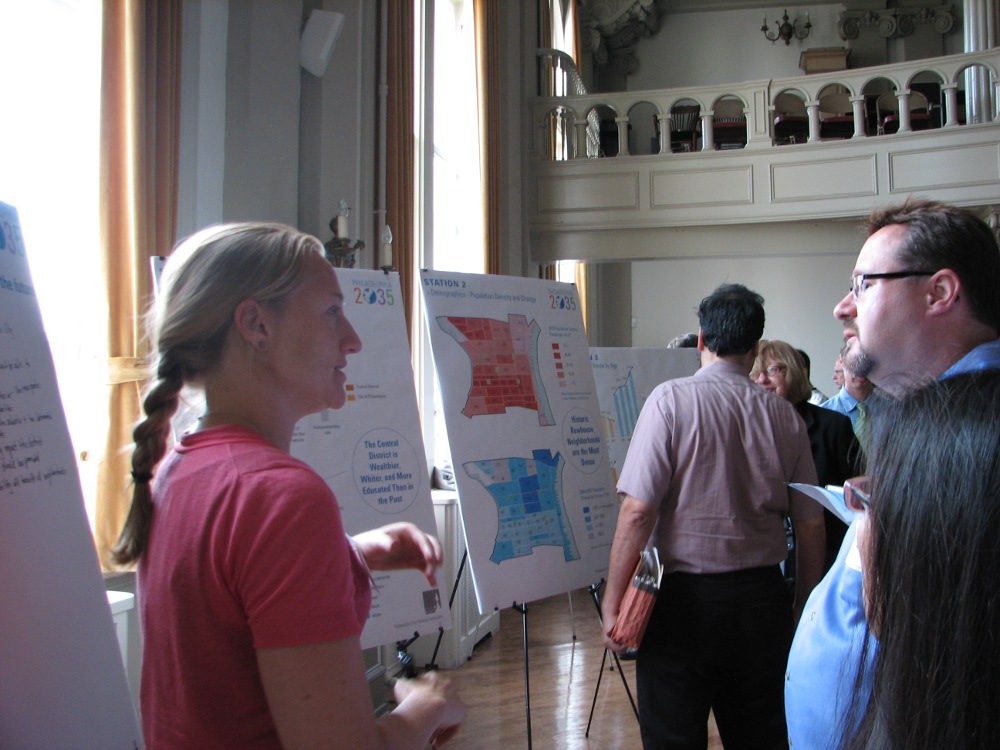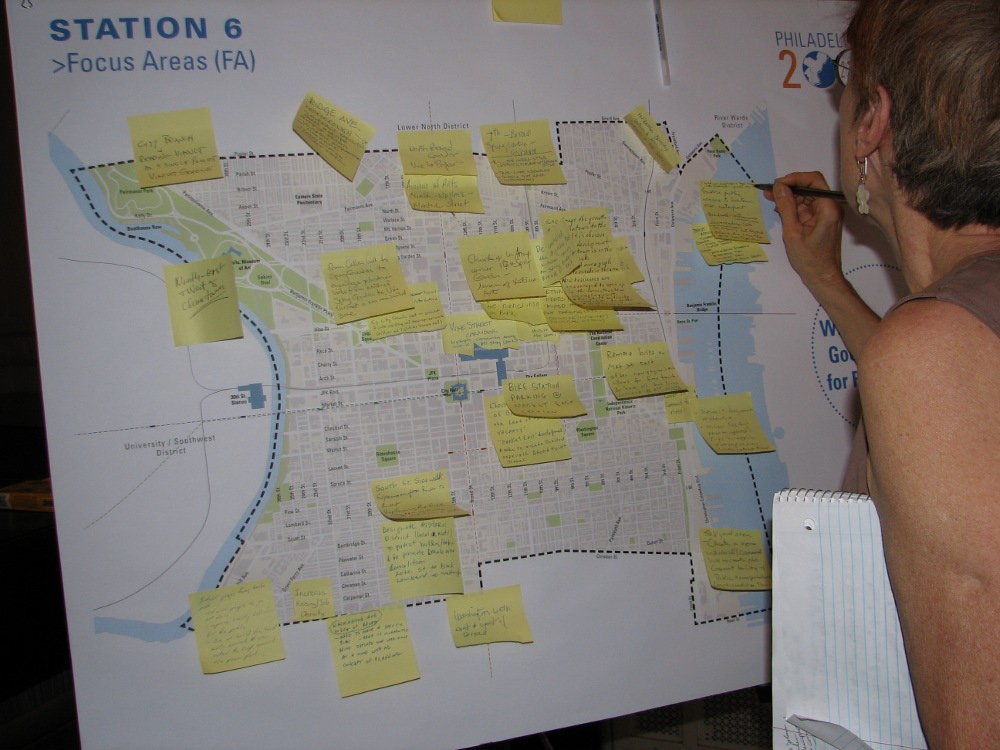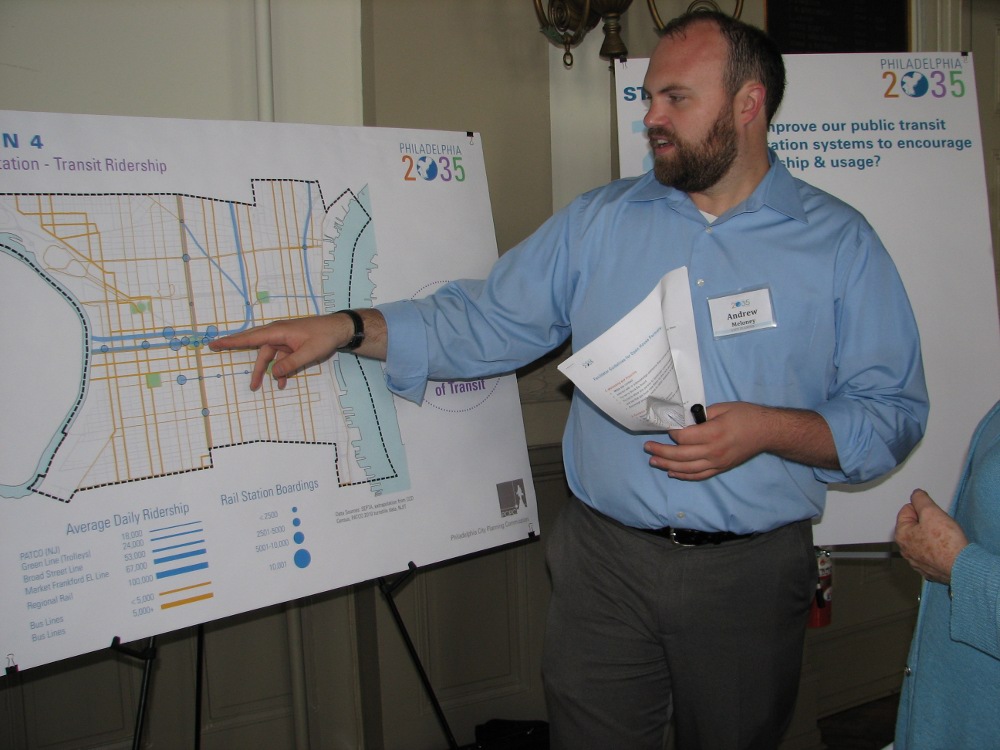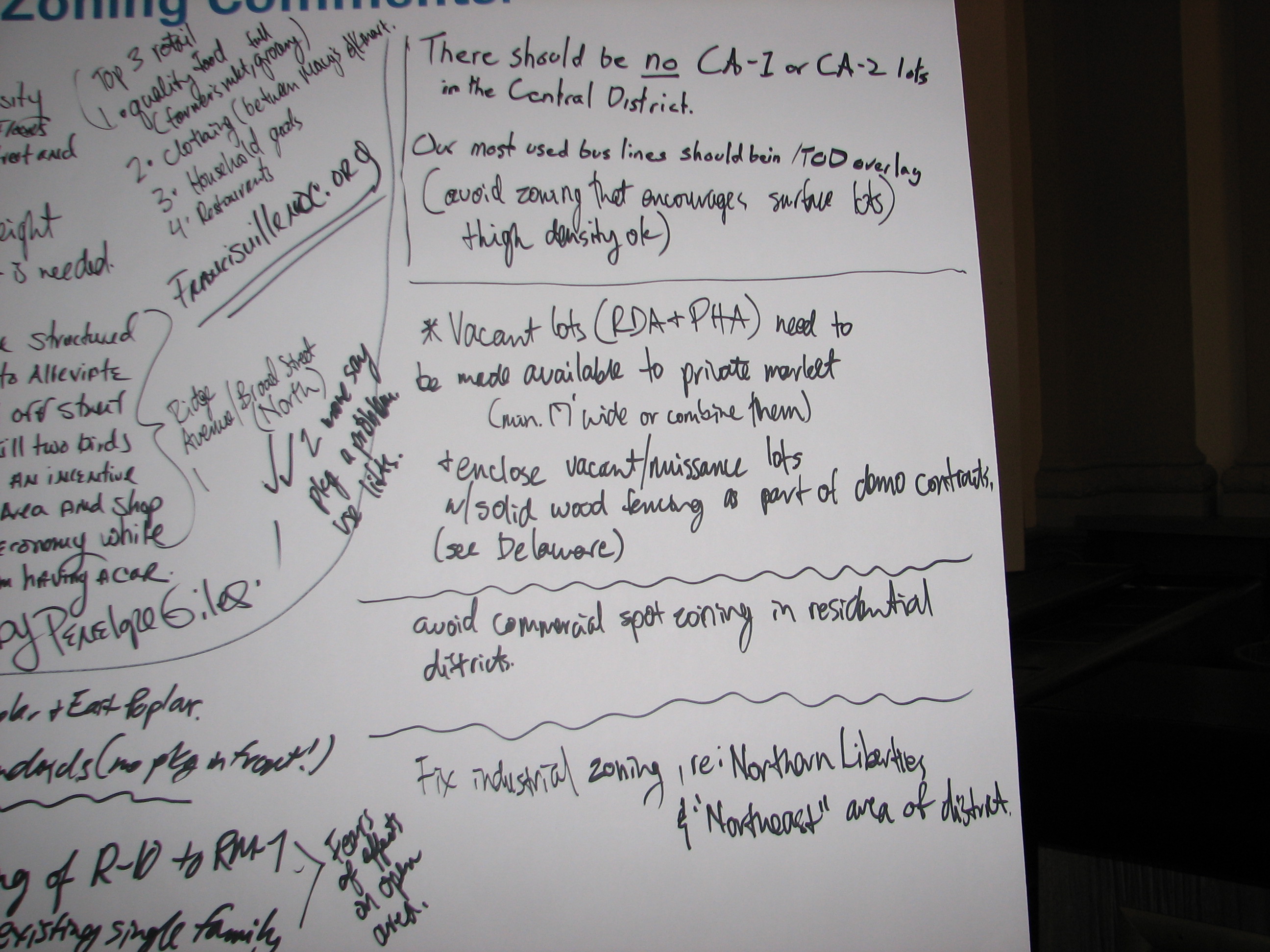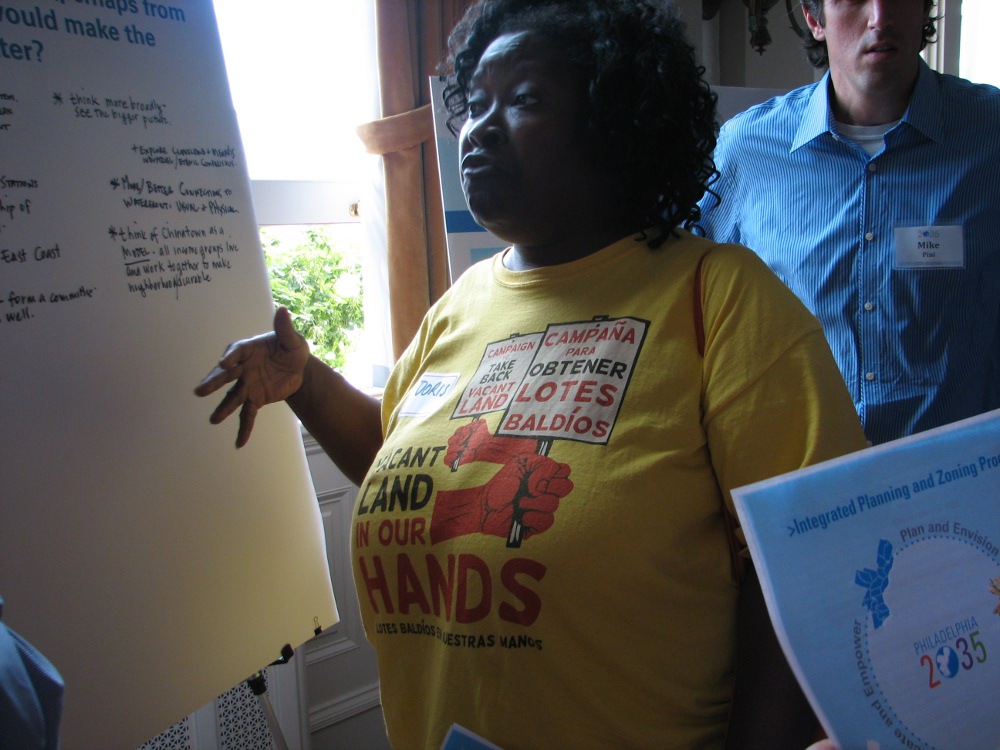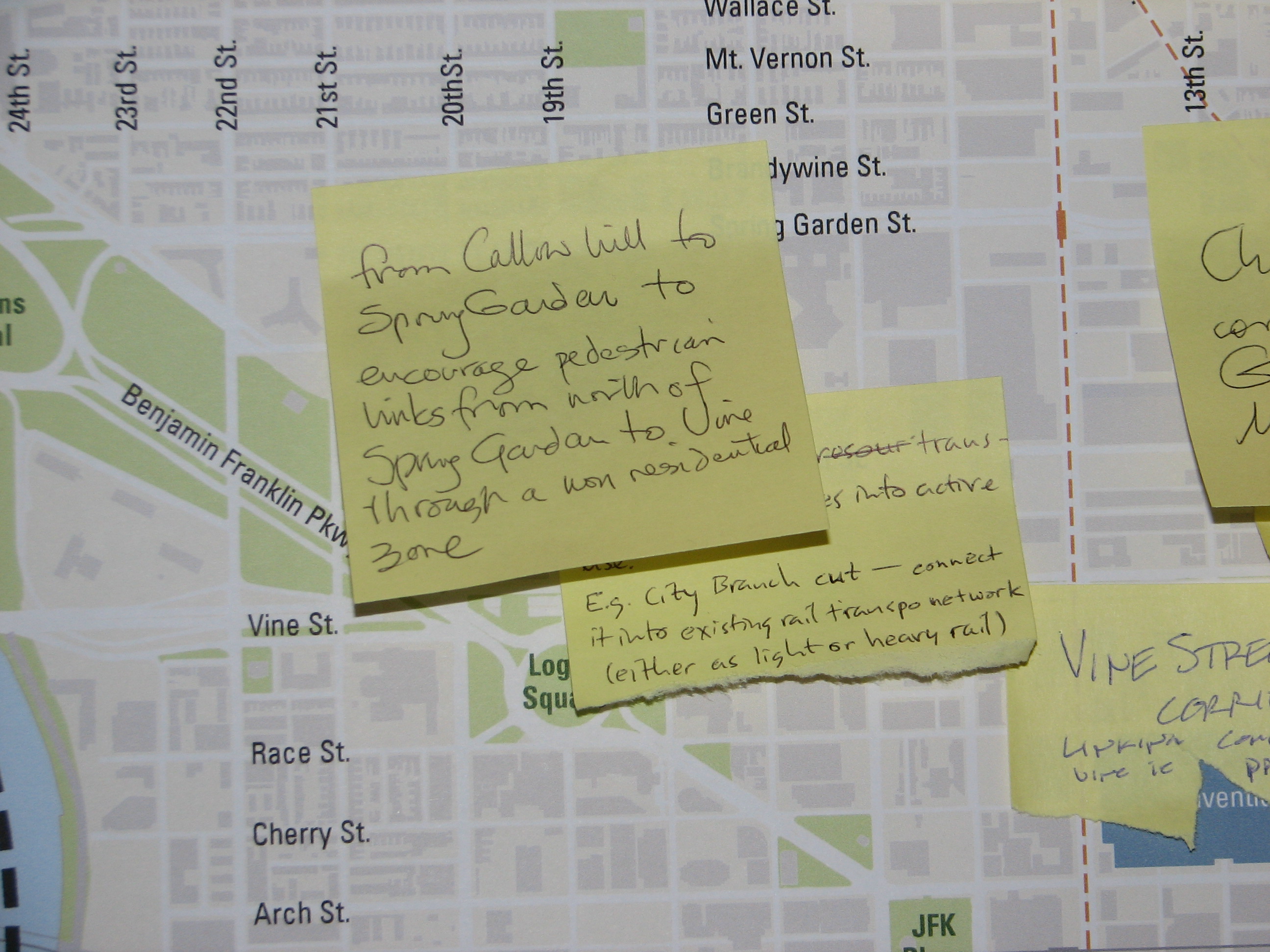Planning underway for Central District portion of the city’s new comprehensive plan
City residents got their first shot at shaping the future of the center of Philadelphia Monday night, at a public input session for the Central District Comprehensive Plan.
The Central District includes Center City, but also goes well beyond those traditional boundaries, stretching from Spring Garden Street in the north to a southern boundary partially on Washington Avenue and partially on Christian Street, and from river to river. (For a list of neighborhoods, click here.)
It includes residential neighborhoods, the largest of Philadelphia’s business districts, two riverfronts, and many historic and cultural institutions.
The Central District Comprehensive Plan, like all 18 of the district-level comprehensive plans, will take the concepts outlined in the city-wide plan, Philadelphia2035, and apply them in more detail. The Philadelphia City Planning Commission has identified several key issues that the Central District Plan will address: The viability and vibrancy of the retail corridors in the district, connections to the commercial centers of University City and Temple University, development along the Schuylkill and Delaware riverfronts, growth of the office and culture sectors, and enhancement of residential amenities.
At earlier public input sessions for the Lower South, West Park and Lower Northeast district plans, participants were divided into small groups and asked questions to help planners determine what the needs and desires for those areas are. For the Center District plan, too many people were expected to participate, both last night and during a second session on Wednesday, for that format, said area planner Laura Spina. Instead, the 80 or so people who came walked around stations set up around the room, where they saw posters with background information and posted questions, and answered planners’ questions about transit, attracting and retaining residents, parks and open space, and other key topics.
Gaensli Duvervil and Keysha Pilson on what they think the district most needs.
While city planning doesn’t run the school system, Frankford resident Gaensli Duvervil said nearly every goal planners laid out is somehow tied to it. “If you want people to stay in Philadelphia, that’s the main key right there,” he said.
Pat Lowe lives in Rhawnhurst, which is not part of the Center District. But she owns rentals in Northern Liberties, which is, and also in Strawberry Mansion. Lowe suggested a new tax policy: Rather than a property taxed based on the value of the buildings, impose a land tax. “It would help with speculation, especially in areas with empty lots,” she said. “It would discourage people from sitting on vacant land.”
Anne Prosseda lives in Pennsport, in an area she described as just barely south of the Central District boundaries. The health of the city center is very important to her. Prosseda said requiring new construction to be built with universal design principles – in other words, so that anyone, regardless of age or disability can use the space – would help Philadelphians stay in their homes as they age. Retrofitting accommodations is much more difficult and costly, she said.
“I really like what the city department of parks and recreation is trying to do now,” she said. “But I’m very sorry their budget is so poorly funded,” Prosseda said parks are a vital part of making a city attractive to new and current residents, particularly families with children.
Southwest Center City resident Gary Spahn
Some of the other suggestions participants had: Reduce fares and increase the frequency of public transportation options. Examine current public transit routes to see if updates are needed. Encourage the building of more affordable housing and more upper-middle-income condos. Promote economic diversity in all neighborhoods. Be cautious not to re-zone too much industrial land to residential uses. Extend the subway to the Navy Yard. Change the business tax structure.
Watch more video from participants Andy Peng of South Philadelphia, who said more population density would mean lower taxes for everyone, and from Stephen Stofka, who writes for Hidden City Philadelphia, and who said it’s time to review transit routes and improve signage.
A second round of the same input session will be held from 5:30 to 7:30 Wednesday at the Hamilton Garden at Kimmel Center, 300 S. Broad Street. This fall, planners will talk about the geographical and topical areas they will focus on, and a draft plan will be revealed in early 2013, likely in February.
Reach the reporter at kgates@planphilly.com
WHYY is your source for fact-based, in-depth journalism and information. As a nonprofit organization, we rely on financial support from readers like you. Please give today.



